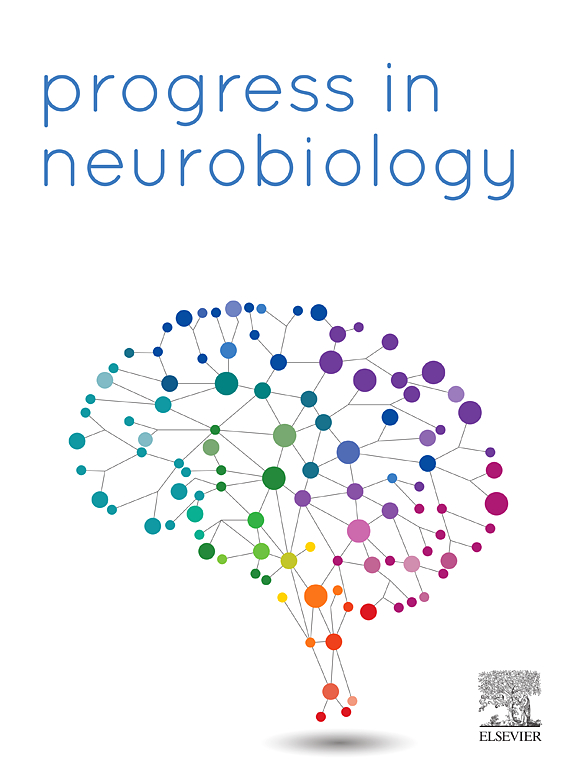Evidence for the involvement of a fronto-striatal pathway in the processing of social reward
IF 6.1
2区 医学
Q1 NEUROSCIENCES
引用次数: 0
Abstract
Social interactions are a hallmark of animal behavior and is essential for survival, cooperation, and reproduction. Despite its necessity, the neural mechanisms that drive social behavior, particularly the rewarding nature of social interactions, are not fully understood. Social behaviors are inherently rewarding, and this intrinsic value plays a key role in reinforcing and shaping social engagement. A growing body of work has sought to quantify social reward in rodents using behavioral paradigms such as social conditioned place preference and operant social motivation tasks, offering translational tools to probe underlying circuit mechanisms. Historically, this research has centered on the mesolimbic dopamine pathway, particularly the ventral tegmental area and its projections to the nucleus accumbens. However, emerging evidence supports a complementary role for prefrontal cortical (PFC) circuits in modulating social motivation and reward. The PFC integrates contextual and social information via distinct neuronal populations and exerts top-down control over behavior through its projections to subcortical targets such as the ventral striatum (vSTR). While prior research has implicated the PFC-vSTR pathway in general aspects of social behavior, its specific contribution to the encoding of social reward remains poorly defined. Here, we synthesize existing findings and propose a novel mechanism in which prefrontal parvalbumin (PV) interneurons regulate social reward by modulating PFC-vSTR output. We further consider how neuromodulators such as oxytocin and dopamine interact with this circuit to further influence social behavior. Elucidating the microcircuit-level control of social reward has significant implications for neuropsychiatric disorders, including autism spectrum disorder and schizophrenia, where social motivation and reward processing are often disrupted.
额纹状体通路参与社会奖励过程的证据。
社会互动是动物行为的一个标志,对生存、合作和繁殖至关重要。尽管它是必要的,但驱动社会行为的神经机制,特别是社会互动的奖励性质,还没有完全被理解。社会行为本质上是有益的,这种内在价值在加强和塑造社会参与方面起着关键作用。越来越多的研究试图利用社会条件位置偏好和操作性社会动机任务等行为范式来量化啮齿动物的社会奖励,为探索潜在的回路机制提供了翻译工具。历史上,这方面的研究主要集中在中边缘多巴胺通路,特别是腹侧被盖区及其向伏隔核的投射。然而,新出现的证据支持前额皮质(PFC)回路在调节社会动机和奖励方面的补充作用。PFC通过不同的神经元群整合上下文和社会信息,并通过投射到皮层下目标(如腹侧纹状体(vSTR))对行为施加自上而下的控制。虽然先前的研究已经暗示了PFC-vSTR通路在社会行为的一般方面,但它对社会奖励编码的具体贡献仍然不明确。在此,我们综合已有的研究结果,提出了一种新的机制,即前额叶小白蛋白(PV)中间神经元通过调节PFC-vSTR输出来调节社会奖励。我们进一步研究了催产素和多巴胺等神经调节剂如何与该回路相互作用,从而进一步影响社会行为。阐明社会奖励的微电路水平控制对神经精神疾病有重要意义,包括自闭症谱系障碍和精神分裂症,其中社会动机和奖励处理经常中断。
本文章由计算机程序翻译,如有差异,请以英文原文为准。
求助全文
约1分钟内获得全文
求助全文
来源期刊

Progress in Neurobiology
医学-神经科学
CiteScore
12.80
自引率
1.50%
发文量
107
审稿时长
33 days
期刊介绍:
Progress in Neurobiology is an international journal that publishes groundbreaking original research, comprehensive review articles and opinion pieces written by leading researchers. The journal welcomes contributions from the broad field of neuroscience that apply neurophysiological, biochemical, pharmacological, molecular biological, anatomical, computational and behavioral analyses to problems of molecular, cellular, developmental, systems, and clinical neuroscience.
 求助内容:
求助内容: 应助结果提醒方式:
应助结果提醒方式:


